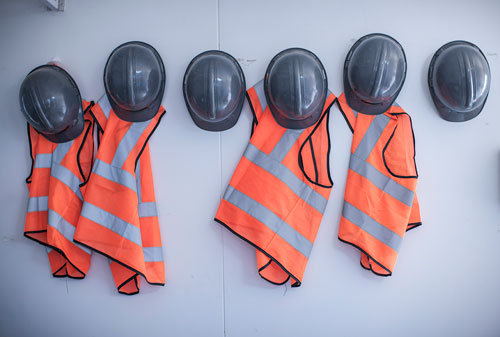




The two main aspects of legislation relevant to health and safety in a childcare setting is the Health and Safety at Work Act 1974 and the Children Act 1989.
In order to offer the best possible service to children, carers and visitors, early years providers have a duty to follow the settings health and safety procedures and policies. They are also required to comply with general health and safety policies with regard to the workplace.
Policies and procedures ensure good quality practice, and lead to professional practice by promoting the best possible outcomes for all who are involved in the setting, including children, staff, carers and visitors.
Early years settings/workplaces may include schools, playgroups, day nurseries, before and after school clubs, residential settings for children, area care settings, childminders and nannies who work either from their own homes or at the family's/carers' home.
A list of key legislation for the Early Years:
Workplace health, safety and welfare: A short guide for managers
Y ddwy brif agwedd o ddeddfwriaeth sy'n berthnasol i iechyd a diogelwch mewn lleoliad gofal plant yw Deddf Iechyd a Diogelwch yn y Gwaith 1974 a Deddf Plant 1989.
Er mwyn cynnig y gwasanaeth gofal gorau posib i blant, gofalwyr ac ymwelwyr, mae gan ddarparwyr blynyddoedd cynnar ddyletswydd i ddilyn gweithdrefnau a pholisïau iechyd a diogelwch y lleoliad. Hefyd, mae’n ofynnol i gydymffurfio â pholisïau iechyd a diogelwch cyffredinol sydd yn ymwneud â’r gweithle.
Mae polisïau a gweithdrefnau yn sicrhau arfer o ansawdd, ac yn arwain at arfer broffesiynol drwy hybu’r canlyniadau gorau posib i bawb sydd yn ymwneud â’r lleoliad, yn cynnwys plant, staff, gofalwyr ac ymwelwyr.
Gall lleoliadau/gweithle blynyddoedd cynnar gynnwys ysgolion, cylchoedd meithrin, meithrinfeydd dydd, clybiau cyn ac ar ôl ysgol, lleoliadau preswyl i blant, lleoliadau gofal maes, gwarchodwr plant a nani sy’n gweithio o un ai cartrefi eu hunain neu gartref y teulu/gofalwyr.
Rhestr Deddfwriaethau allweddol ar gyfer y Blynyddoedd Cynnar:
Iechyd, diogelwch a lles yn y gweithle: Canllaw byr i reolwyr
Drag the contents to the correct act
Llusgwch y cynnwys i’r Ddeddf gywir
Warning! This resource is not optimised for use on mobile devices.
Rhybudd! Ni ellir defnyddio’r adnodd yma ar ffonau symudol neu dabled.
Well done. You have matched them all correctly.
Da iawn. Rydych wedi paru pob un yn gywir.
|
Act
Deddf
|
Contents of the act
Cynnwys y ddeddf
|
Correct answers
Atebion cywir
|
|---|

According to the Health and Safety at Work Act 1974, employers are responsible for ensuring the health, safety and welfare of children, young people, workers and others associated with the workplace. This includes parents/carers, visitors, full time staff, part time staff, occasional staff, temporary staff or anybody who is on work experience. Staff are entitled to work in an environment where health and safety risks are managed on a daily basis. Therefore, employers must comply with this act.
As well as the employer, staff have a duty to ensure their own health and safety, and the health and safety of anyone else associated with the role or the setting. Workers must cooperate with their employer and colleagues in order to meet legal requirements, and the setting's policies.
Employers and workers must:
HSE Guidance: Workers: Are you an employee
Yn ôl y ddeddf Iechyd a Diogelwch yn y Gweithle 1974, cyfrifoldeb y cyflogwr yw gofalu am iechyd, diogelwch a lles y plant neu bobl ifanc, y gweithwyr ac eraill sy’n ymwneud â’r gweithle. Hynny yw, rhieni/gofalwyr, ymwelwyr, staff llawn amser, rhan amser, staff achlysurol, dros dro neu unrhyw un ar brofiad gwaith. Mae gan staff yr hawl i weithio mewn amgylchedd lle mae risgiau iechyd a diogelwch yn cael eu rheoli’n ddyddiol. Felly, mae’n rhaid i gyflogwyr gydymffurfio â’r ddeddf hon.
Yn ogystal â’r cyflogwr, mae gan staff ddyletswydd i ofalu am iechyd a diogelwch eu hunain, ac unrhyw un arall sy’n ymwneud â’r swydd neu'r lleoliad. Mae’n rhaid i weithwyr gydweithredu gyda’r cyflogwr a chyd-weithwyr er mwyn cyfarfod â gofynion cyfreithiol a hefyd polisïau’r lleoliad.
Mae’n rhaid i gyflogwyr a gweithwyr :
HSE Guidance: Workers: Are you an employee
Use the thought shower to note six employer responsibilities
Defnyddiwch y gawod syniadau i nodi chwech o gyfrifoldebau’r cyflogwr

Childcare workers have a duty to ensure that they comply with all policies and procedures relating to health and safety in the workplace, as well as the Health and Safety at Work Act 1974. They also have a responsibility to register their setting with the Care Inspectorate Wales (CIW) and to comply with the Regulations and National Minimum Standards: Daycare and Play, which include the legal standards with regard to staff ratios, the safety and suitability of the building, risk assessments and trips away from the site.
Childcare workers are responsible for the following:
Although risk assessments are completed regularly, and that there are health and safety policies and procedures in place, sometimes concerns may be raised, which pose risks with regard to health and safety at the setting. Some examples are listed below.
The Reporting of Injuries, Diseases and Dangerous Occurrences Regulations (RIDDOR) 2013 act states that the appropriate body must be notified of accidents associated with the workplace.
Any concerns with regard to working practices or conditions should be discussed immediately with the setting's health and safety officer. If these concerns are not rectified, the office must contact the Health and Safety Executive (HSE).
Contact HSE: Reporting of Injuries, Diseases and Dangerous Occurrences Regulations 2013
Workplace health, safety and welfare: A short guide for managers
Mae gan weithwyr y blynyddoedd cynnar ddyletswydd gofal i sicrhau eu bod yn cydymffurfio â’r holl bolisïau a gweithdrefnau sy’n ymwneud ag iechyd a diogelwch yn y gweithle, yn ogystal â Deddf Iechyd a Diogelwch yn y Gwaith 1974. Yn ogystal, mae ganddynt gyfrifoldeb i gofrestru eu lleoliad gydag AGC (Arolygiaeth Gofal Cymru) a chydymffurfio â Rheoliadau a Safonau Gofynnol Cenedlaethol: Gofal Dydd a Chwarae, sydd yn cynnwys safonau cyfreithiol ar gyfer cymhareb staff, diogelwch ac addasrwydd yr adeilad, asesiadau risg, a theithiau o’r safle.
Mae gan weithwyr y blynyddoedd cynnar gyfrifoldeb i:
Er bod asesiadau risg yn cael eu cwblhau yn rheolaidd, a bod polisïau a gweithdrefnau iechyd a diogelwch yn eu lle, gall pryderon godi o dro i dro, sy’n achosi risgiau yn ymwneud ag iechyd a diogelwch yn y lleoliad. Rhestrir rhai enghreifftiau isod.
Mae’r ddeddf RIDDOR (Rheoliadau Adrodd ar Anafiadau, Clefydau neu Ddigwyddiadau Peryglus 2013) yn mynnu bod rhaid hysbysu’r corff priodol ynglŷn â damweiniau sy’n gysylltiedig â’r gweithle.
Os oes unrhyw bryderon ynglŷn ag ymarferion neu amodau gwaith, mae angen cysylltu’n syth gyda swyddog iechyd a diogelwch y lleoliad. Os na fydd y pryderon hyn yn cael eu datrys, mae’n ofynnol i’r swyddog gysylltu â’r Comisiwn Iechyd a Diogelwch (HSE).
Contact HSE: Reporting of Injuries, Diseases and Dangerous Occurrences Regulations 2013
Iechyd, diogelwch a lles yn y gweithle: Canllaw byr i reolwyr
Drag the words into the correct spaces
Llusgwch y geiriau i’r bylchau cywir
Childcare workers are responsible for the following:
Childcare workers are responsible for the following:
You scored … out of . Move some of the terms around to try to improve your score.
Well done. You scored … out of .
You scored … out of . Click reset to try the activity again.
You scored … out of . Move some of the terms around to try to improve your score.
Well done. You scored … out of .
You scored … out of . Click reset to try the activity again.
Mae gan weithwyr y blynyddoedd cynnar gyfrifoldeb i:
Mae gan weithwyr y blynyddoedd cynnar gyfrifoldeb i:
Eich sgôr yw … allan o . Symudwch rhai o'r termau o gwmpas i geisio gwella eich sgôr.
Da iawn. Eich sgôr yw … allan o .
Eich sgôr yw … allan o . Cliciwch ‘ailosod’ er mwyn rhoi cynnig arall ar y gweithgaredd.
Eich sgôr yw … allan o . Symudwch rhai o'r termau o gwmpas i geisio gwella eich sgôr
Da iawn. Eich sgôr yw … allan o .
Eich sgôr yw … allan o . Cliciwch ‘ailosod’ er mwyn rhoi cynnig arall ar y gweithgaredd.